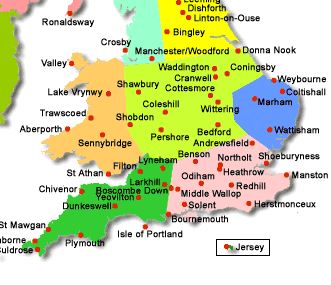6. Weather forecasting
The basis of all weather forecasting is data - lots and lots of data. And ICT is perfectly suited to provide both historic and real-time data.
The first task is to collect the data, the second is to make a forecast and finally to distribute the results.
Local weather station.
In the UK there are hundreds of weather measurement stations dotted around the country. These are manned by both volunteers and professionals who diligently note down certain measurements twice a day.

The stations contain calibrated thermometers with an audit trail right back the national standards laboratory. Along with other measurement devices.
Measurements include:
- Temperature
- Humidity
- Rainfall
- Wind velocity (speed and direction)
- Cloud cover
- Atmospheric air pressure
- Hours of sunlight
Every day, the measurements are sent to the 'Met Office' who collate the data and begin the task of making a forecast.
Data is also gathered out at sea by ships and automated weather buoys. Satellite images show cloud movements and cover. Scientific satellites take remote measurements such as sea temperature and sea state.
challenge see if you can find out one extra fact on this topic that we haven't already told you
Click on this link: making a weather forecast
